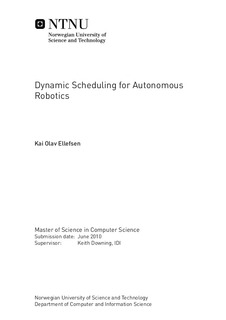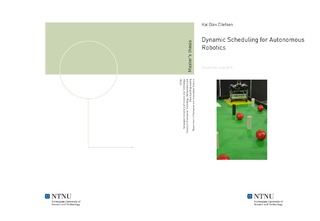| dc.description.abstract | This project report describes a hybrid genetic algorithm that works as a schedule generator for a complex robotic harvesting task. The task is set to a dynamic environment with a robotic opponent, making responsiveness of the planning algorithm particularly important. To solve this task, many previous scheduling algorithms were studied. Genetic algorithms have successfully been used in many dynamic scheduling tasks, due to their ability to incrementally adapt and optimize solutions when changes are made to the environment. Many of the previous approaches also used a separate heuristic to quicly adapt solutions to the new environment, making the algorithm more responsive. In addition, the study of previous work revealed the importance of population diversity when making a responsive genetic algorithm. Implementation was based on a genetic algorithm made as the author's fifth year specialization project for solving a static version of the same task. This algorithm was hybridized with a powerful local search technique that proved essential in generating good solutions for the complex harvesting task. When extending the algorithm to also work in a dynamically changing environment, several adaptations and extensions needed to be made, to make it more responsive. The extensions and adaptations include a fast-response heuristic for immediate adaptation to environmental changes, a decrease in genotype size to speed up local searches and a contingency planning module intending to solve problems before they arise. Experiments proved that the implemented dynamic planner successfully adapted its plans to a changing environment, clearly showing improvements compared to running a static plan. Further experiments also proved that the dynamic planner was able to deal with erroneous time estimates in its simulator module in a good way. Experiments on contingency planning gave no clear results, but indicated that using computational resources for planning ahead may be a good choice, if the contingency to plan for is carefully selected. As no unequivocal results were obtained, further studies of combining genetic algorithms and contingency planning may be an interesting task for future efforts. | nb_NO |

